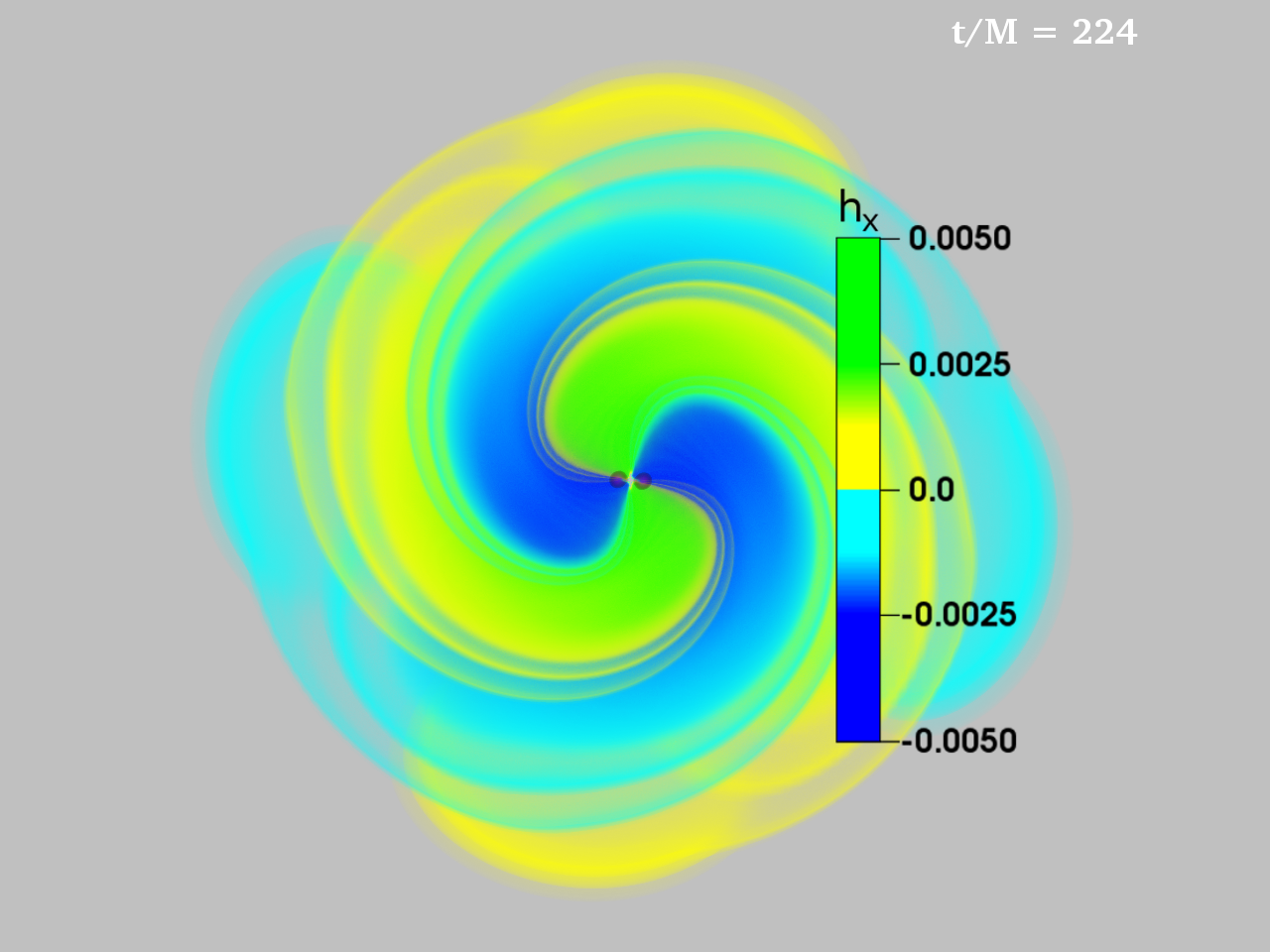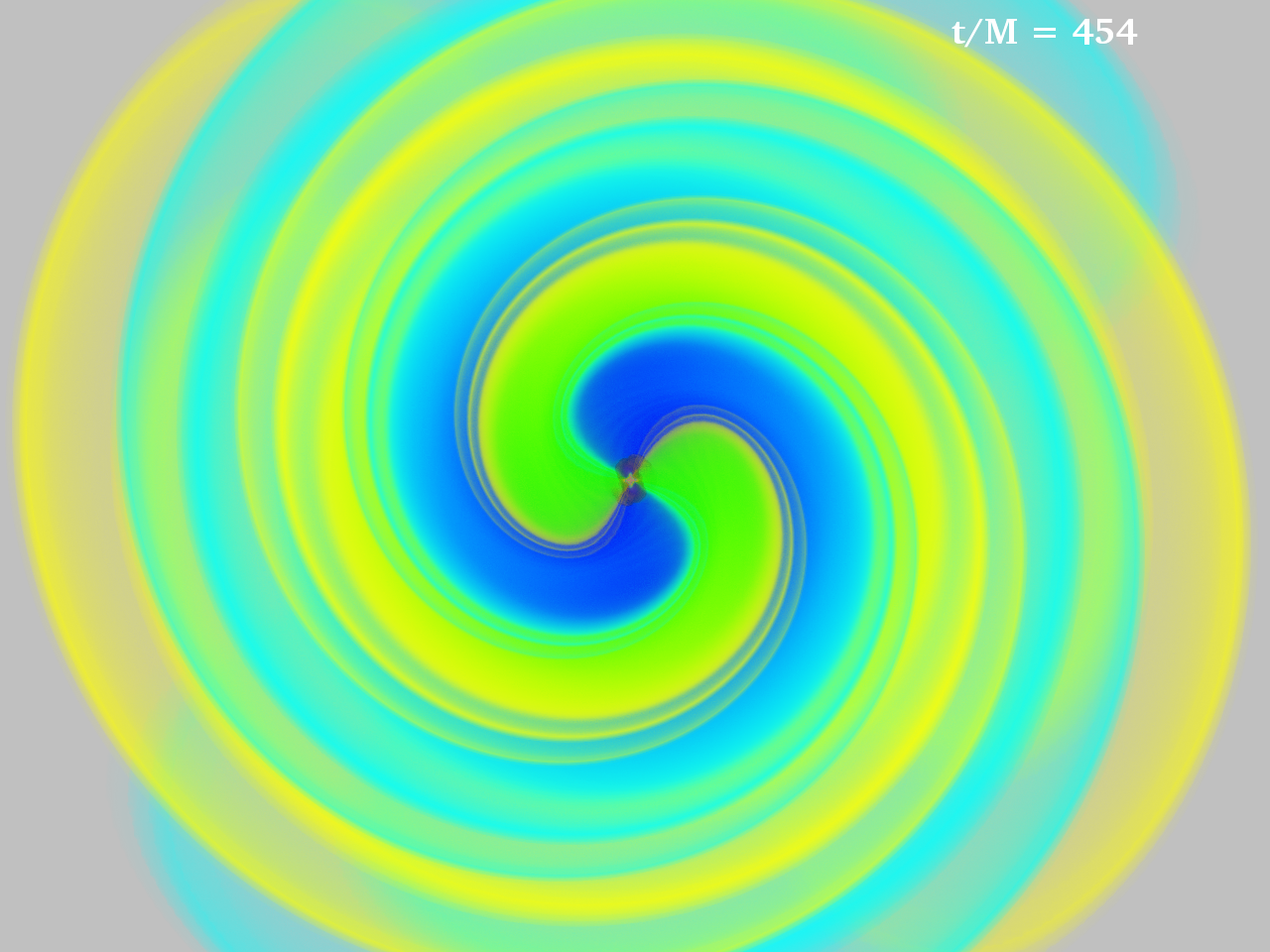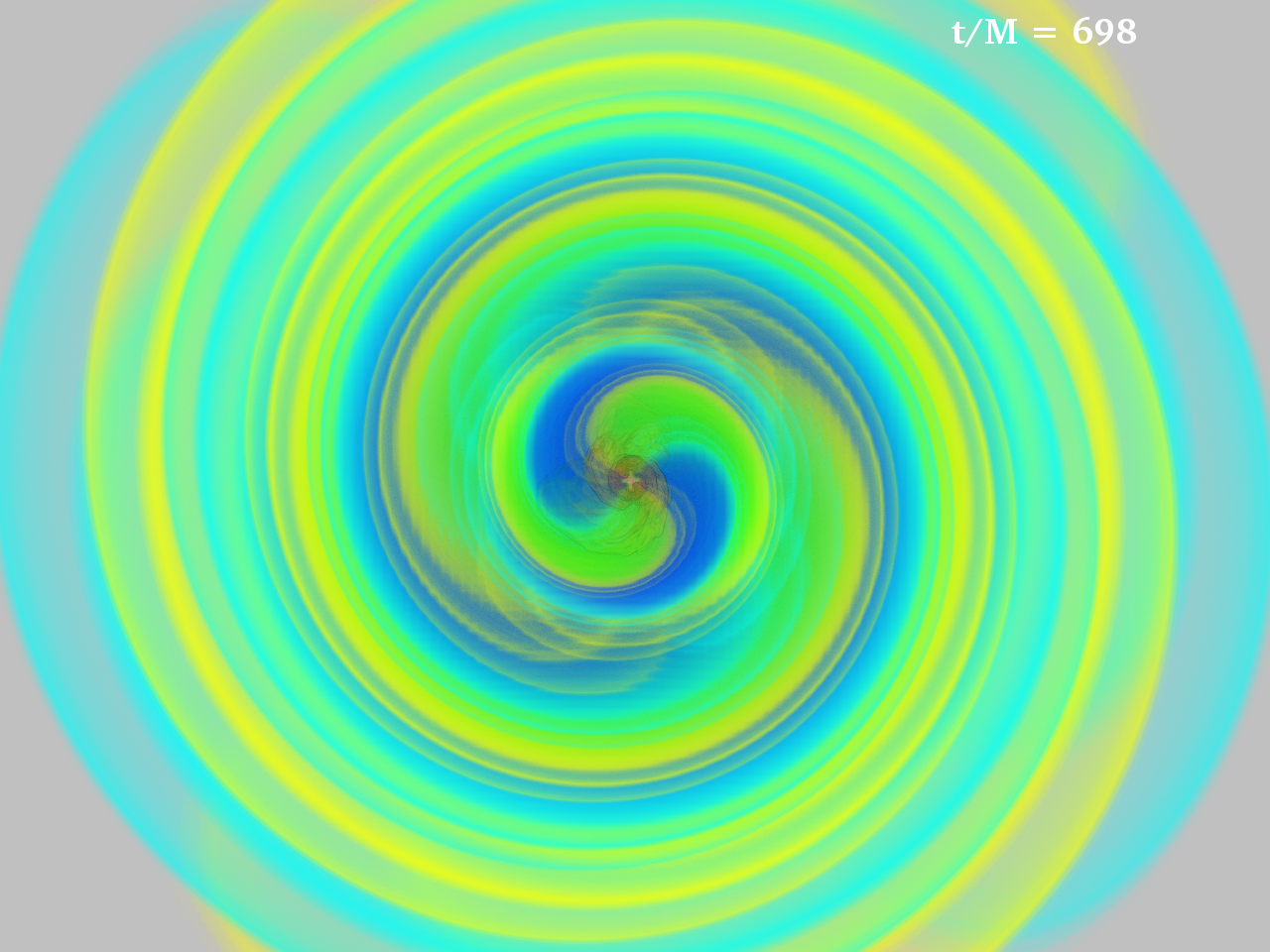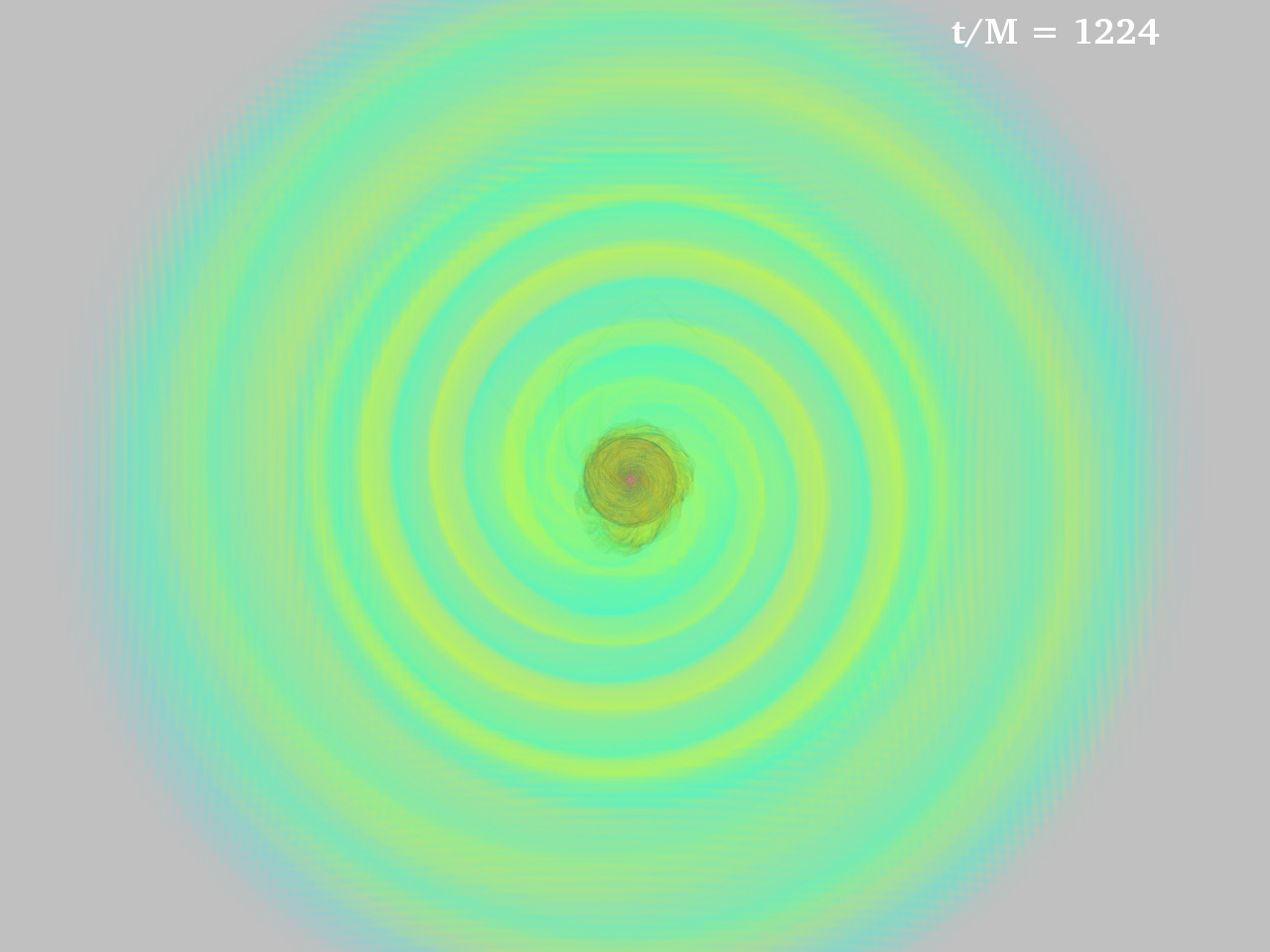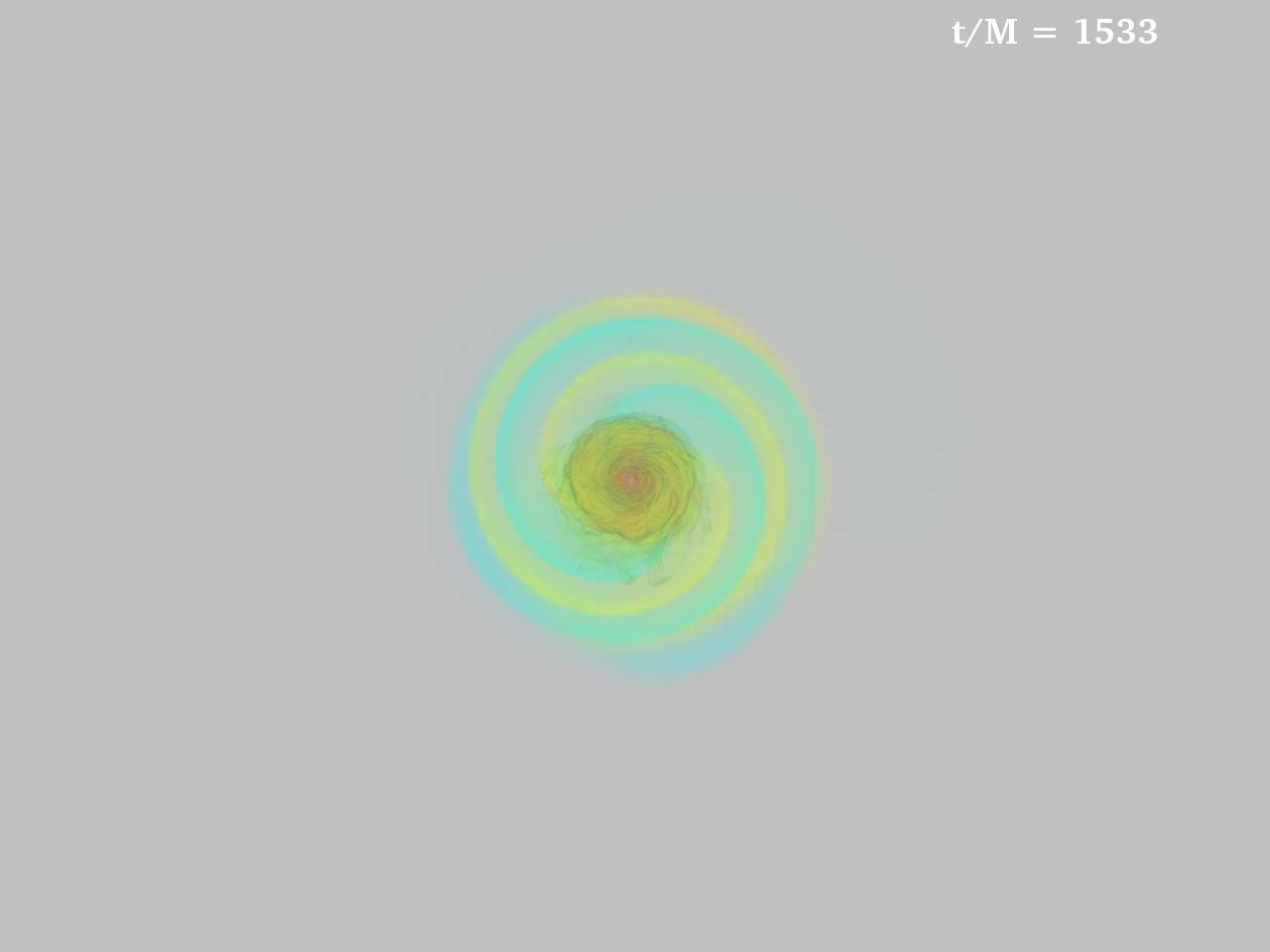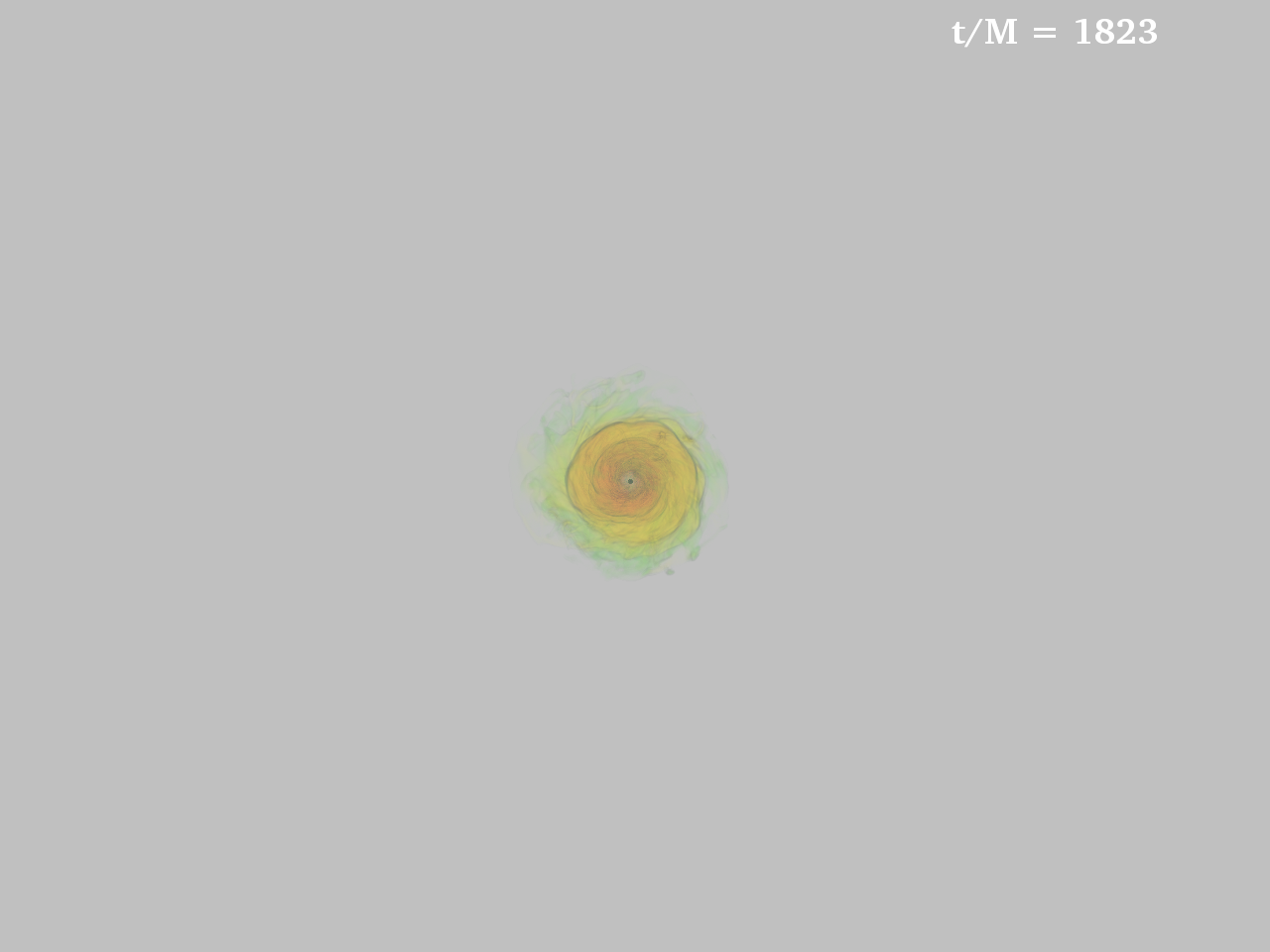Gravitational Waveforms

Case A: Irrotational
The gravitational wavetrain from an NSNS merger may be separated into four qualitatively different phases: the inspiral, merger, HMNS spindown and BH ringdown. During the inspiral phase, which takes up most of the binary's lifetime, gravity wave emission gradually reduces the binary separation. The merger phase of the gravitational wavetrain is characterized by tidal disruption of the neutron star, followed by the formation of a hypermassive neutron star (HMNS). As the HMNS spins down, it pulses and emits GWs. After the HMNS undergoes delayed collapse to a spinning BH, ringdown radiation is emitted as the distorted BH settles down to Kerr-like equilibrium (Note: Only in the case of a vacuum spacetime does the spinning BH obey the exact Kerr solution. The BHs formed here are surrounded by gaseous disks with small, but nonnegligible, rest mass). The h× polarization mode of the gravitational wave is shown below.


